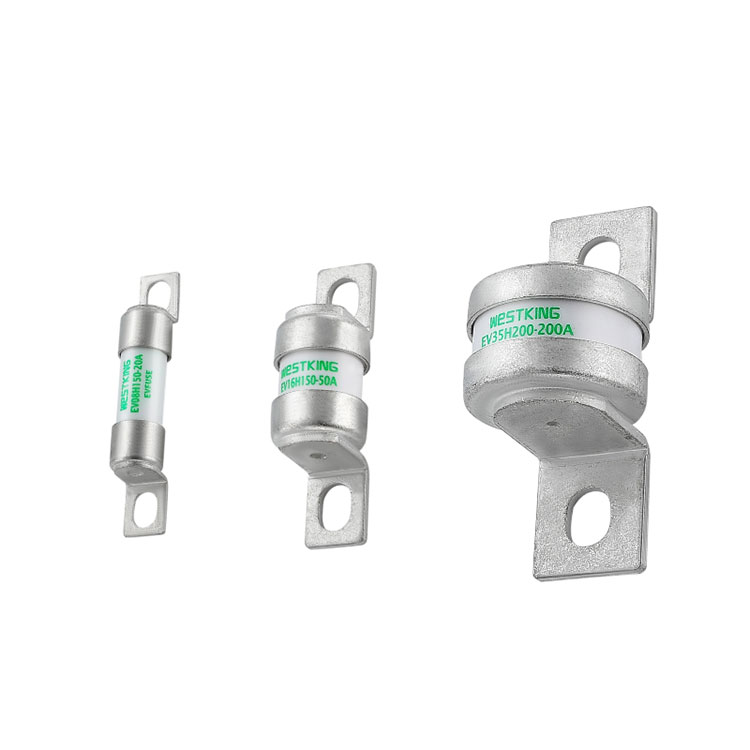Features and Applications of Type H Road Vehicles Fuse-links
2024-07-25
Type H road vehicles fuse-links are an integral part of automotive electrical systems, providing protection against overcurrent conditions. Here are the detailed features and applications of these fuse-links:
Features of Type H Road Vehicles Fuse-links
1. Standardized Ratings:
- Designed according to specific standards to ensure compatibility and reliability.
- Available in various current ratings, typically ranging from 1A to 40A, to accommodate different circuit protection needs.
2. Construction Materials:
- Made from high-quality materials such as plastic, ceramic, and metal to withstand harsh automotive environments.
- Designed to be heat-resistant and durable to handle the thermal and mechanical stresses within a vehicle.
3. Compact Design:
- Compact and lightweight, fitting easily into the limited space of automotive fuse boxes.
- Often color-coded by current rating for easy identification and replacement.
4. Quick Response:
- Engineered to respond quickly to overcurrent conditions, ensuring timely interruption of the circuit to prevent damage.
5. Plug-in Design:
- Easy to install and replace, typically featuring a plug-in design that fits into standard automotive fuse holders.
6. Voltage Rating:
- Suitable for automotive electrical systems, typically rated for 12V or 24V DC applications.
Applications of Type H Road Vehicles Fuse-links
1. Protection of Electrical Circuits:
- Protects various electrical circuits within a vehicle, such as lighting, heating, air conditioning, and infotainment systems.
2. Preventing Damage:
- Helps to prevent damage to wiring and electronic components by interrupting the circuit during an overcurrent situation.
- Reduces the risk of electrical fires caused by short circuits or excessive current.
3. Safety and Reliability:
- Enhances the overall safety and reliability of the vehicle's electrical system by providing consistent and dependable circuit protection.
4. Versatility:
- Used in a wide range of vehicles, including cars, trucks, motorcycles, and recreational vehicles (RVs).
- Suitable for both OEM (Original Equipment Manufacturer) applications and aftermarket replacements.
5. Maintenance and Diagnostics:
- Facilitates easy maintenance and troubleshooting of automotive electrical systems.
- Allows for quick identification and replacement of blown fuses to restore functionality.
Specific Applications
1. Lighting Systems:
- Protects headlamps, tail lights, interior lights, and auxiliary lighting circuits from overcurrent damage.
2. Engine and Transmission Control:
- Safeguards critical engine and transmission control circuits to ensure optimal vehicle performance.
3. Power Accessories:
- Protects circuits for power windows, seats, mirrors, and other electronic accessories.
4. Audio and Infotainment:
- Ensures the safety of audio systems, navigation units, and other infotainment components.
5. HVAC Systems:
- Provides protection for heating, ventilation, and air conditioning systems, ensuring comfortable cabin conditions.
Tips for Using Type H Fuse-links
1. Correct Rating:
- Always use the fuse with the correct current rating as specified by the vehicle manufacturer to avoid under or over-protection.
2. Regular Inspection:
- Periodically inspect fuses for signs of wear, damage, or corrosion, and replace any faulty ones promptly.
3. Proper Installation:
- Ensure fuses are properly seated in the fuse holder to maintain a secure connection and effective protection.
4. Keep Spares:
- Keep a set of spare fuses in the vehicle to allow for quick replacements when needed.
Type H road vehicles fuse-links are a crucial component in maintaining the safety and functionality of automotive electrical systems. By understanding their features and applications, you can ensure proper protection and maintenance of your vehicle's electrical circuits.



